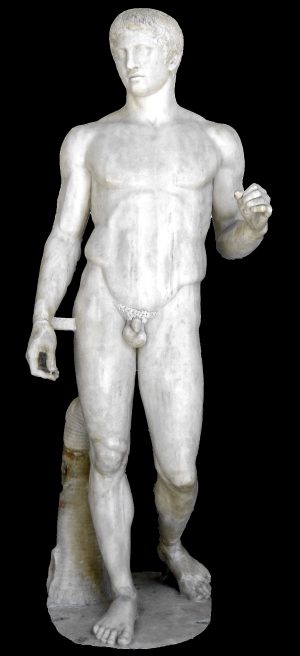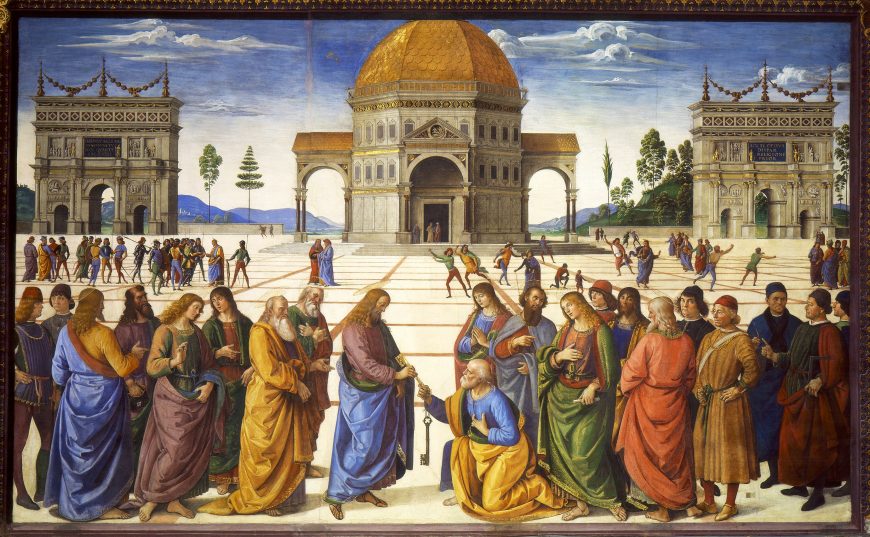art terms
Proportion
Proportion refers to the relationship of parts of a body or form to one another and of the parts to the whole, for example, the size of the head of a figure in relation to the entire body.

Polykleitos, Doryphoros (Spear-Bearer), c. 450-40 B.C.E., ancient Roman marble copy found in Pompeii of the lost bronze original, 211 cm (Archaeological Museum, Naples)
Scale
Scale is the relationship of parts of an image to the image as a whole, or to something in the world outside of the image, for example, the size of the figure of a king in an image as compared to the size of the figure of his servant in the same image, or the size of a statue of the king as compared to the size of an actual person. Beginning with proportion, we can look again at Doryphoros. We will compare his proportions to those of an Altar Group from Benin with Oba (King) Akenzua I and Two Attendants.
Doryphoros’ proportions were laid out according to mathematical formulas in order to create an image that the sculptor believed presented the “ideal man.”
Doryphoros is about seven “heads” tall, so to speak, whereas the Akenzua is approximately two and a half “heads” tall. Doryphoros’ limbs fit within the range of average human proportion, whereas Akenzua’s legs are considerably shorter than his torso.
While their proportions are quite different, both present figures considered to be ideal by their cultures. Doryphoros embodies quite literally the focus on external beauty — according to the tastes of the day — that was prevalent in Classical Greece, whereas the image of Akenzua shows, with the intentional enlargement of the head, the greater importance of the intellect in the culture.
Hieratic scale
Scale can refer to any relationship of parts to the whole, but one particular type is of great significance in many periods: Hieratic scale is scale based on relative importance. That is, the more important a figure, the larger he or she is in relation to the figures around him or her. This is quite different from the naturalistic scale found in works organized by linear perspective, like Perugino’s painting.

Perugino, Christ Giving the Keys of the Kingdom to St. Peter, Sistine Chapel, 1481-83, fresco, 10 feet 10 inches x 18 feet (Vatican, Rome)
Akenzua, for example, is considerably larger than the figures that flank him. These are not children, but adult male attendants. We are not supposed to therefore assume that Akenzua is a giant, but rather, that he is far more important than the other two men. Also note that the other two have rather different proportions: their heads are much smaller in relation to their bodies, and their arms and legs longer. This reminds us that Akenzua’s proportions are absolutely deliberate, not the result of incompetence but of a conscious effort to convey a cultural meaning.
Before leaving this work, though, two more details should be mentioned. At their feet are small cats, but these are leopards — traditional symbols of the king — and so even the attendants are comparatively giant. And below the cats are fallen men, bound with their hands behind them, decapitated. The symbolism of decapitation as the ultimate, dehumanizing death highlights the importance of the scale of the head of the king who towers over them.
QuestionsTips & Thanks